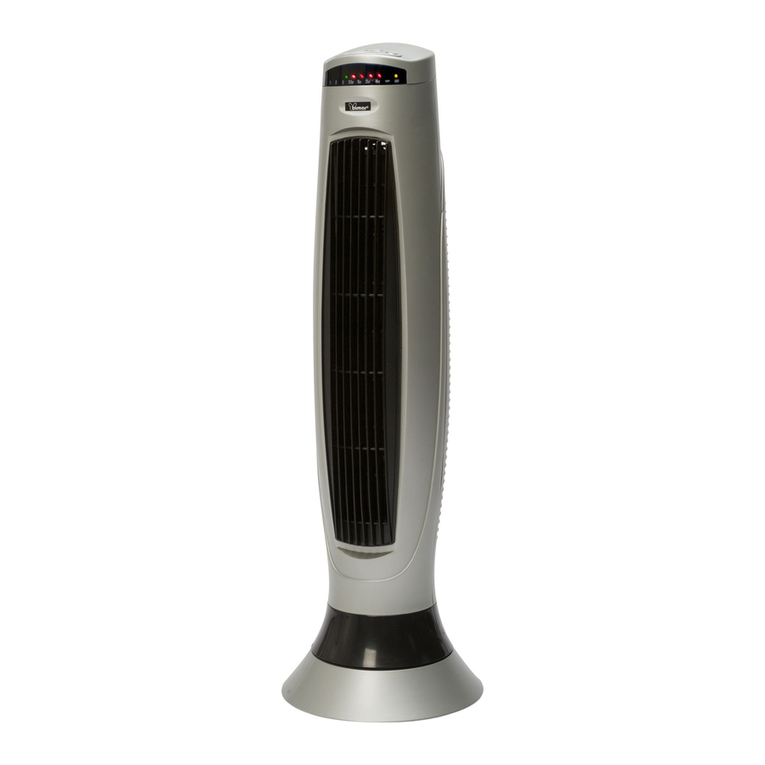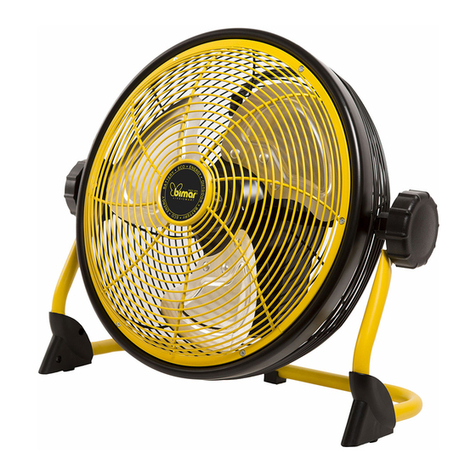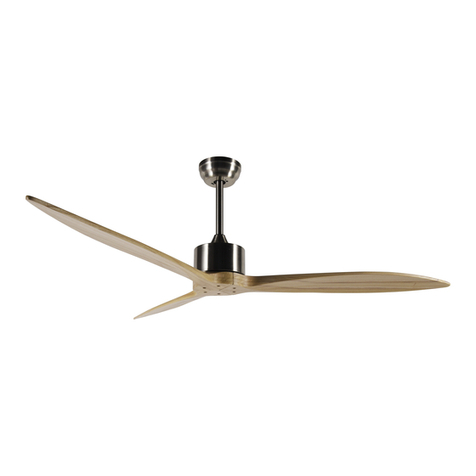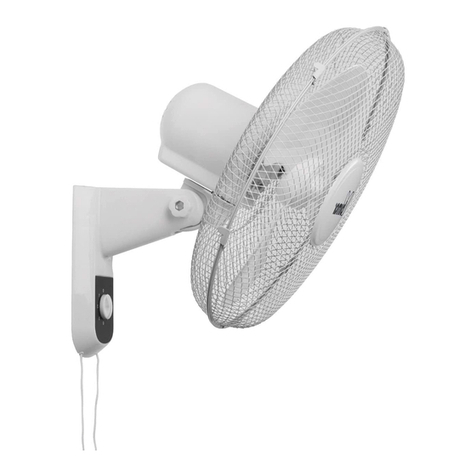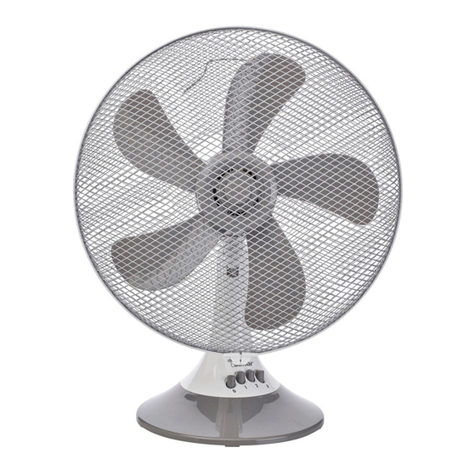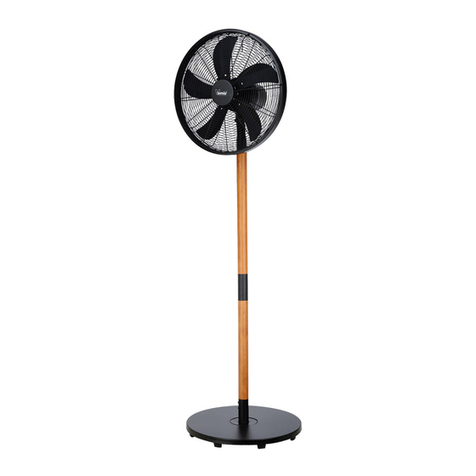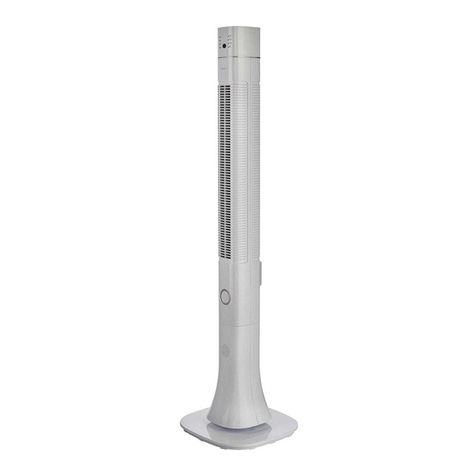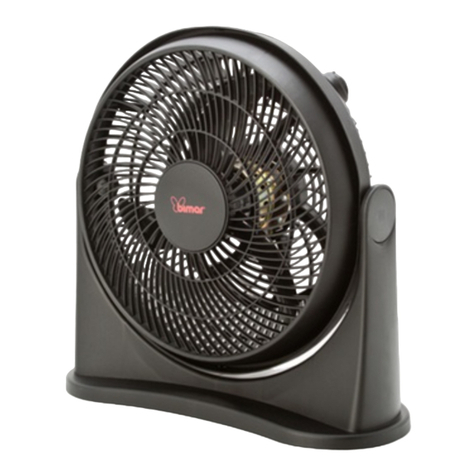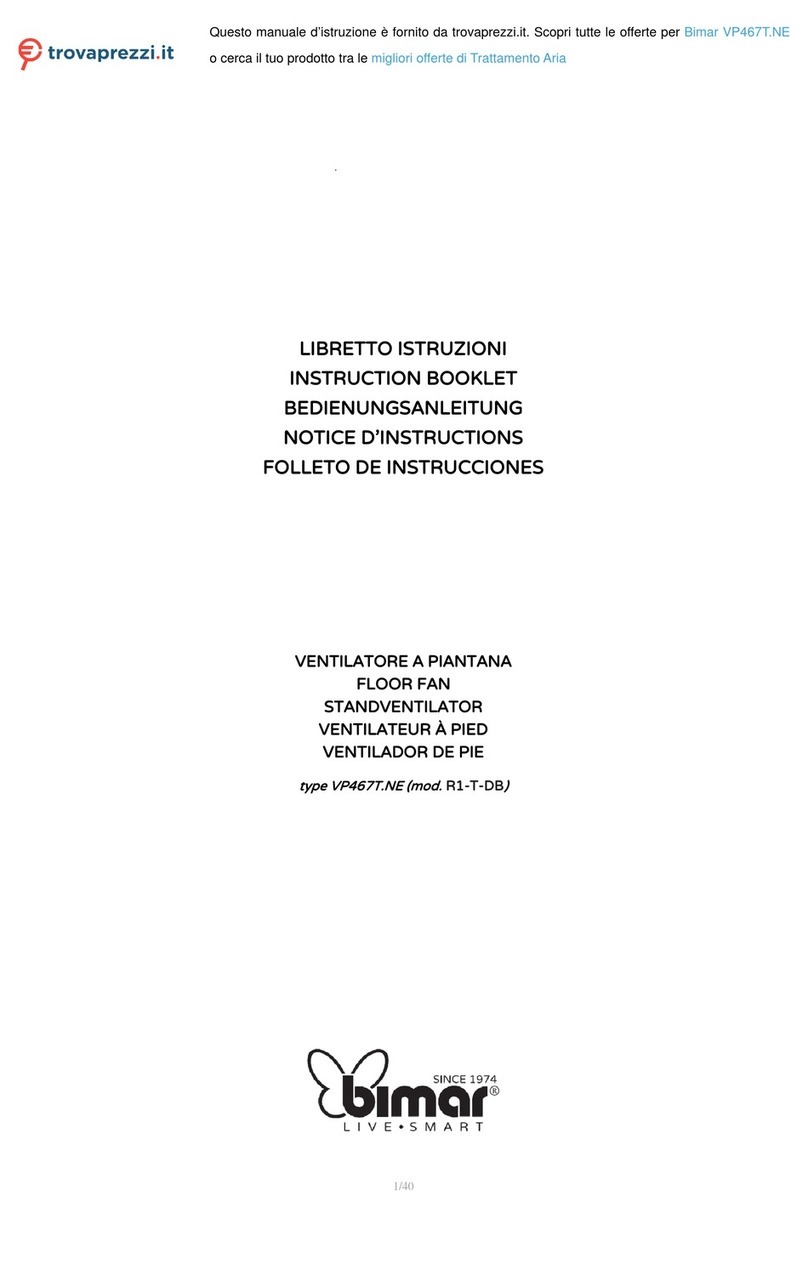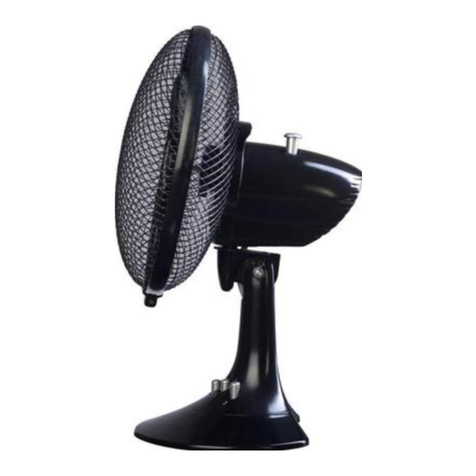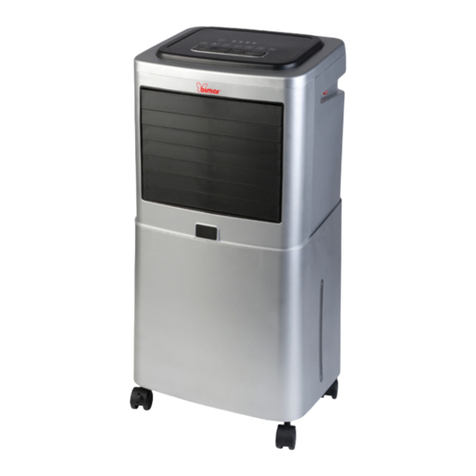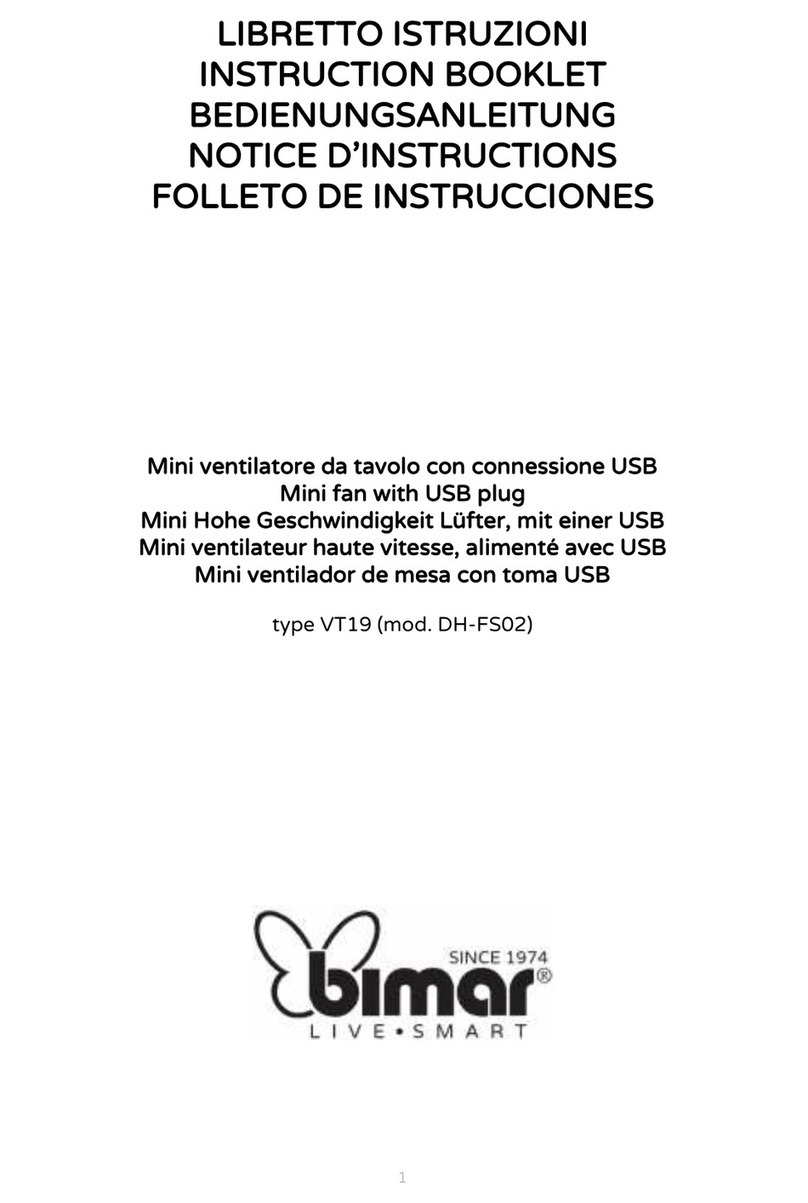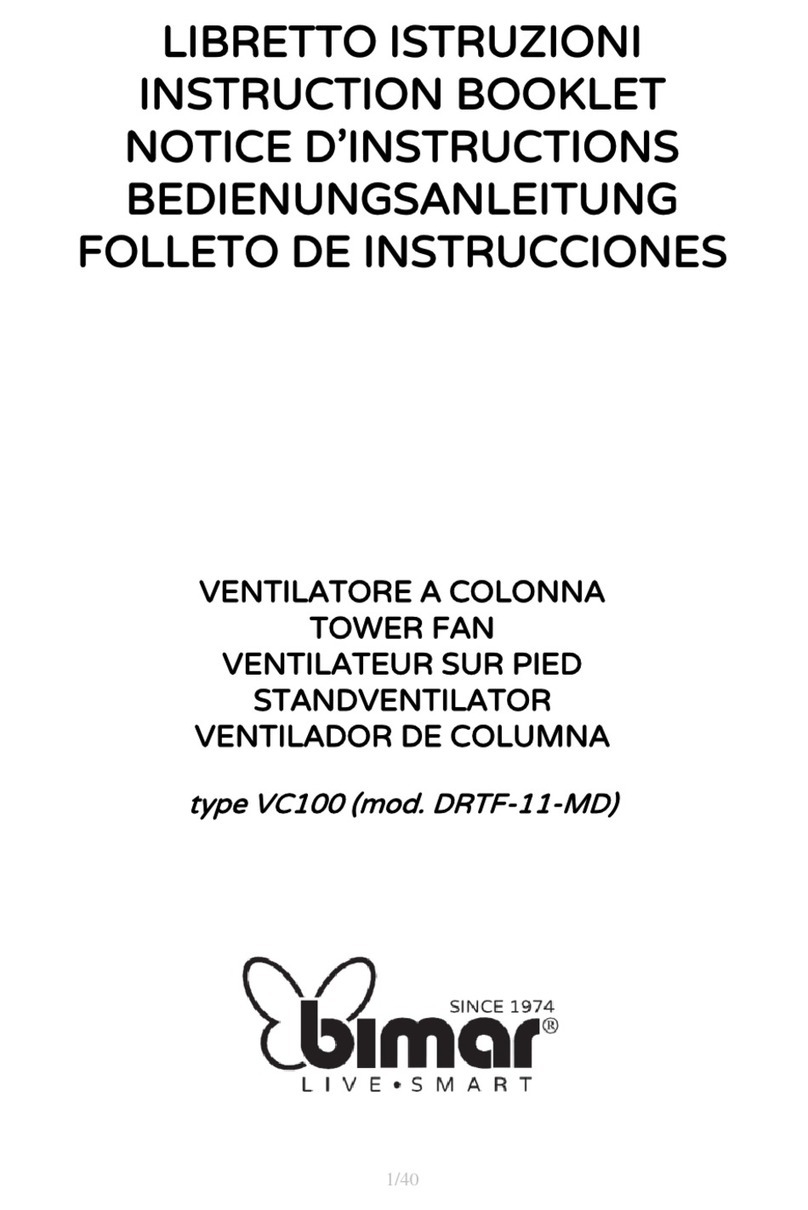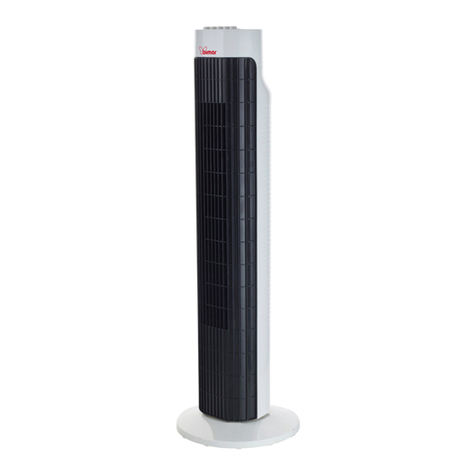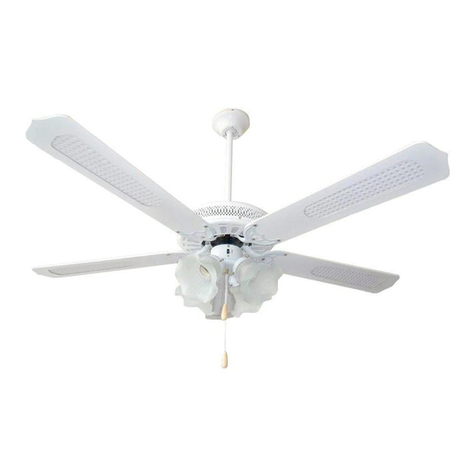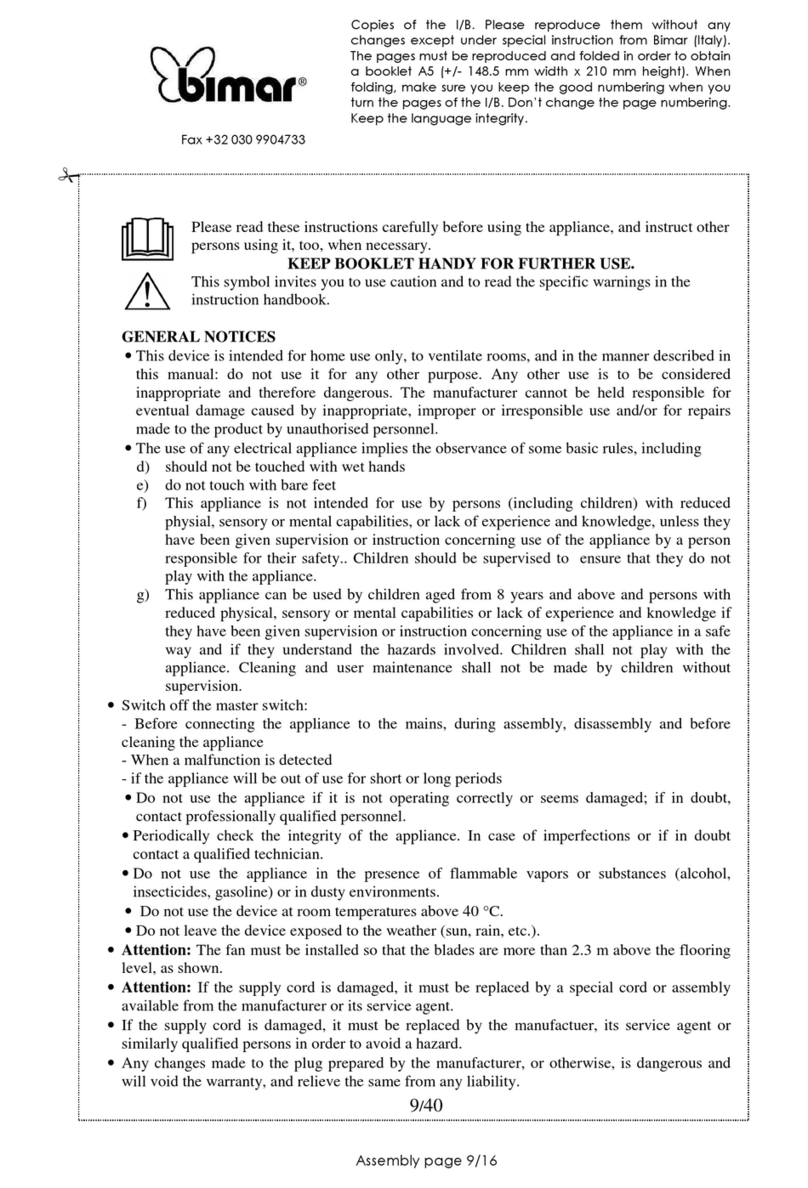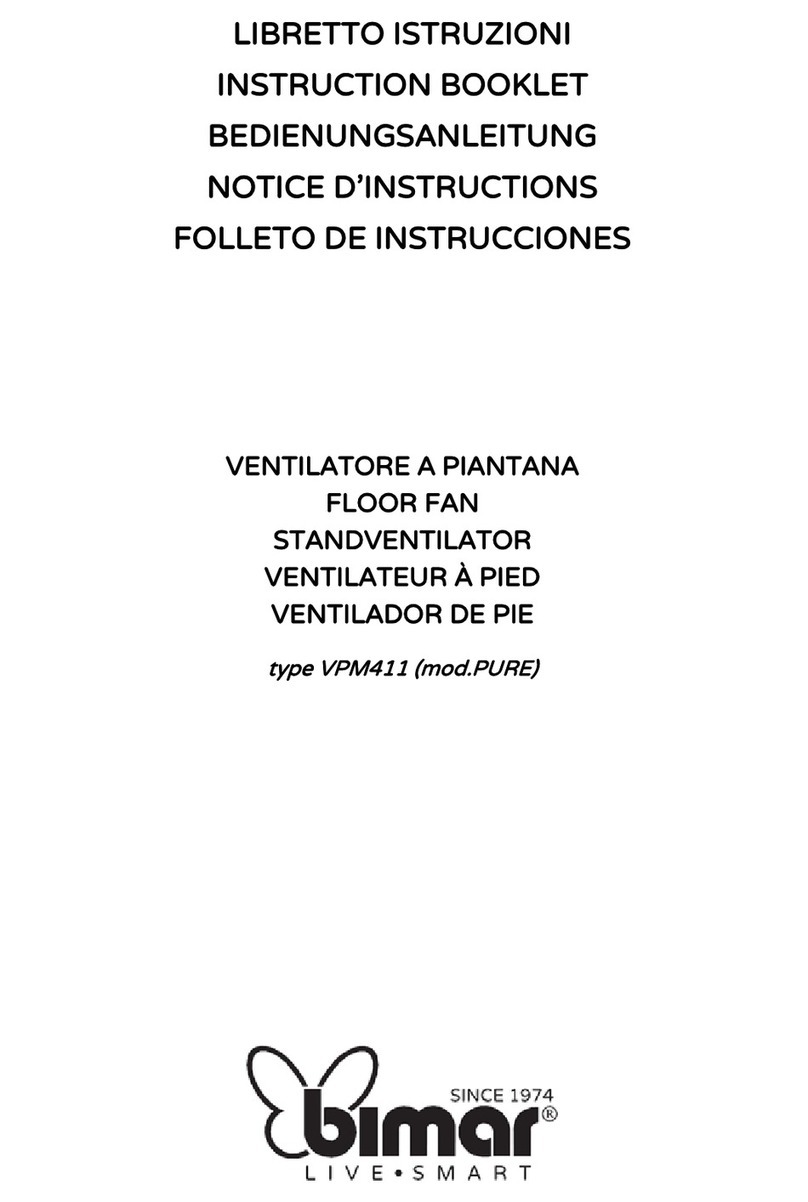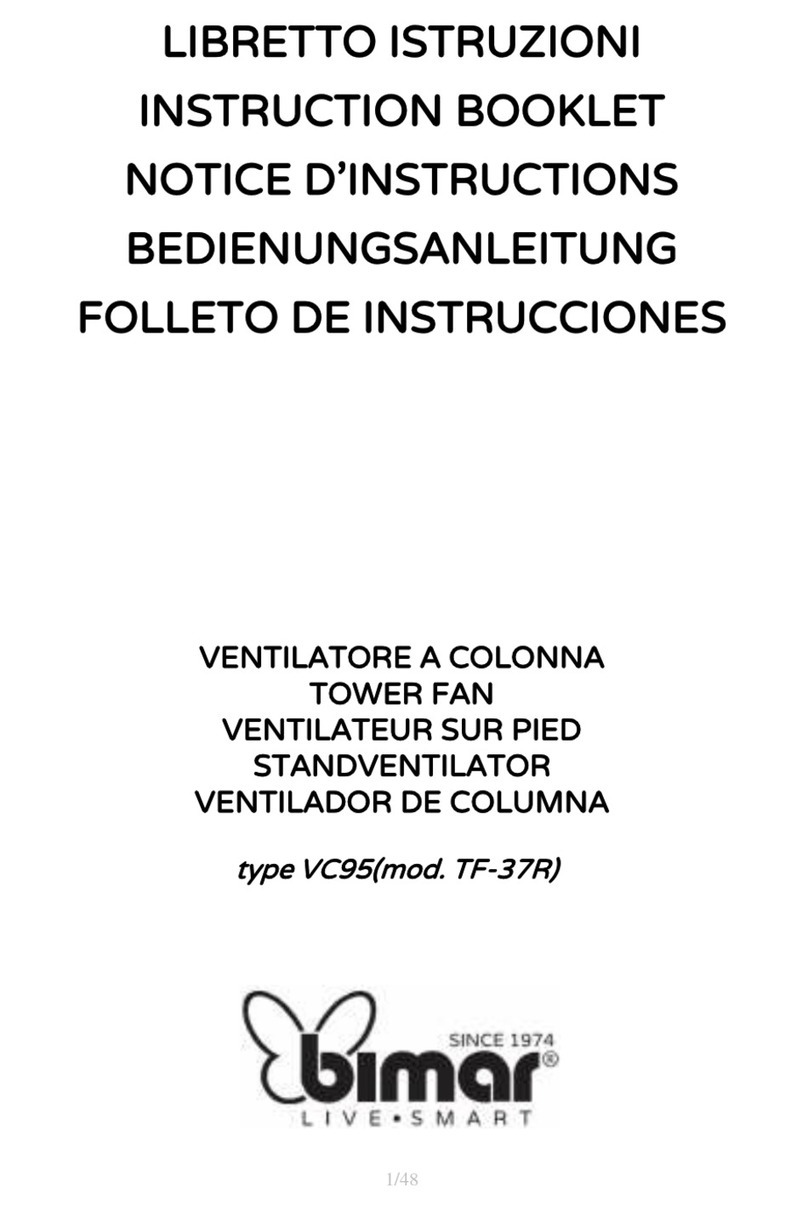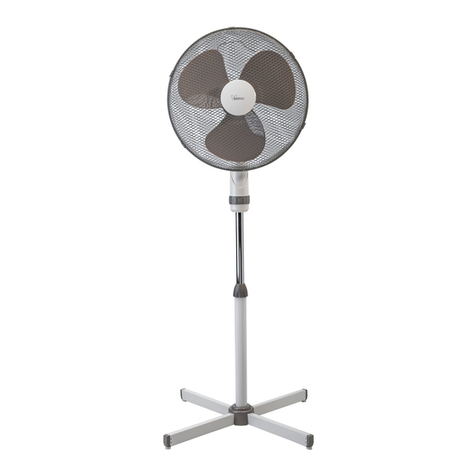
5/52
comunque da una persona con qualifica similare, in modo da
prevenire ogni rischio.
•Assicurarsi che il ventilatore sia scollegato dalla rete di
alimentazione prima di togliere lo schermo di protezione (1).
AVVERTENZE PER LE BATTERIE
•
TENERE LE BATTERIE FUORI DALLA PORTATA DEI BAMBINI.
L’ingestione può
provocare ustioni chimiche, perforazione dei tessuti molli e morte. Ustioni gravi possono
insorgere entro 2 ore dall’ingestione. Consultare immediatamente un medico.
•Non permettere ai bambini di sostituire le batterie.
•Inserire correttamente le batterie, facendo attenzione alle polarità (+ e -) marcate sulle
batterie e sull’apparecchio.
•Le batterie non devono essere messe in cortocircuito. Non forzare la scarica delle
batterie. Non caricare le batterie.
•Non utilizzare tra loro batterie nuove e usate o batterie di diverso tipo o di diversi
produttori. Le batterie scariche devono essere rimosse immediatamente dall’apparecchio
e smaltite correttamente, secondo le leggi in vigore.
•Non scaldare le batterie e non esporle a fonti di calore. Non saldare direttamente le
batterie. Non smontare e deformare le batterie.
•Non buttare e non smaltire le batterie nel fuoco. Non mettere a contatto con l’acqua o
l’umidità, in particolare nel caso in cui il contenitore della batteria dovesse essere
danneggiato. Non incapsulare e non modificare le batterie.
•Conservare le batterie non utilizzate nel loro imballaggio originale lontano da oggetti
metallici. Se già rimosse dall’imballaggio, non mischiare o mescolare le batterie.
•Se si intende non utilizzare l’apparecchio per un periodo di tempo prolungato, rimuovere
le batterie.
•Pulire i contatti delle batterie e quelli dell’apparecchio prima di inserire le batterie.
•In caso di perdite dalle batterie, evitare qualsiasi contatto con il materiale fuoriuscito; in
caso contatto, sciacquare la parte interessata con acqua e consultare un medico.
•Dopo aver tolto l’imballaggio, assicurarsi dell’integrità dell’apparecchio; in caso di dubbio
non utilizzarlo e rivolgersi a personale professionalmente qualificato. Gli elementi
d’imballaggio (sacchetti di plastica, polistirolo espanso, chiodi, ecc.) non devono essere
lasciati alla portata di mano di bambini in quanto potenziali fonti di pericolo, ma vanno
smaltiti secondo le norme vigenti negli appositi contenitori per la raccolta differenziata.
: eventuali adesivi o fogli pubblicitari applicati sulla griglia, devono essere
rimossi prima dell’uso dell’apparecchio.
•Prima di collegare l’apparecchio controllare che i valori di tensione riportati sulla targa
dati corrispondano a quelli della rete elettrica. In caso di incompatibilità tra la presa e la
spina dell’apparecchio, far sostituire la presa con altra di tipo adatto da personale
professionalmente qualificato, il quale accerti che la sezione dei cavi della presa sia
idonea alla potenza assorbita dall’apparecchio. In generale è sconsigliato l’uso di






